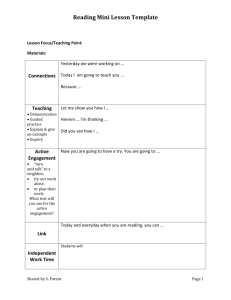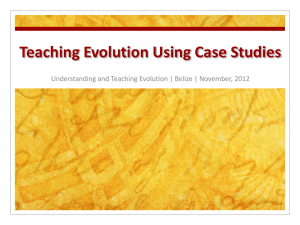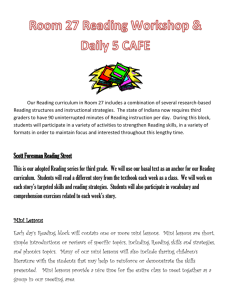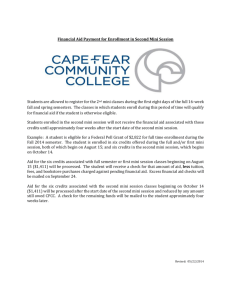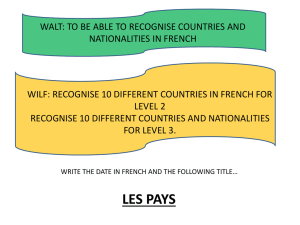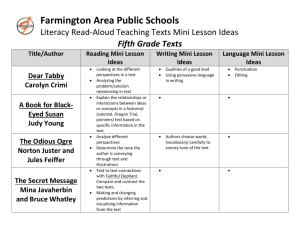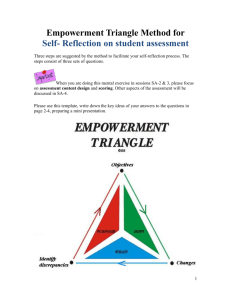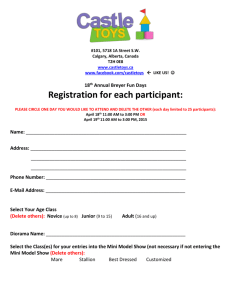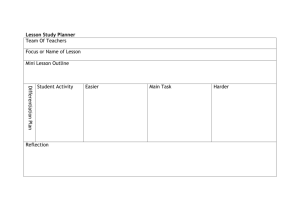Grade 5 Quarter 2 Expressions
advertisement
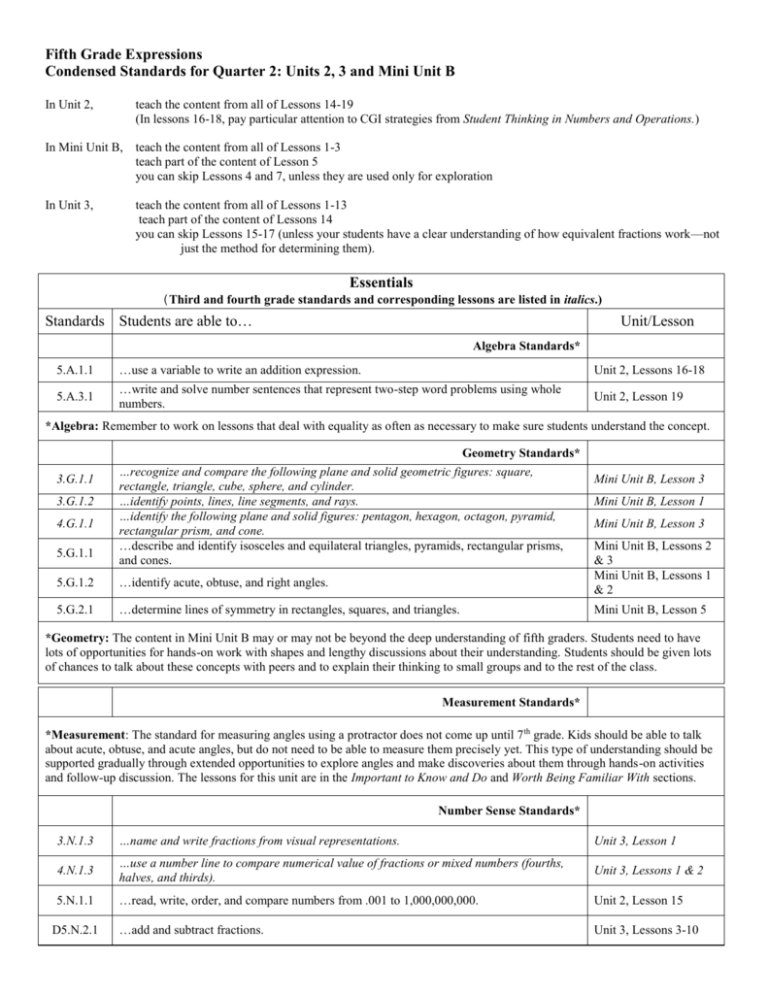
Fifth Grade Expressions Condensed Standards for Quarter 2: Units 2, 3 and Mini Unit B In Unit 2, teach the content from all of Lessons 14-19 (In lessons 16-18, pay particular attention to CGI strategies from Student Thinking in Numbers and Operations.) In Mini Unit B, teach the content from all of Lessons 1-3 teach part of the content of Lesson 5 you can skip Lessons 4 and 7, unless they are used only for exploration In Unit 3, teach the content from all of Lessons 1-13 teach part of the content of Lessons 14 you can skip Lessons 15-17 (unless your students have a clear understanding of how equivalent fractions work—not just the method for determining them). Essentials (Third and fourth grade standards and corresponding lessons are listed in italics.) Standards Students are able to… Unit/Lesson Algebra Standards* 5.A.1.1 …use a variable to write an addition expression. Unit 2, Lessons 16-18 5.A.3.1 …write and solve number sentences that represent two-step word problems using whole numbers. Unit 2, Lesson 19 *Algebra: Remember to work on lessons that deal with equality as often as necessary to make sure students understand the concept. Geometry Standards* 3.G.1.1 3.G.1.2 4.G.1.1 5.G.1.1 …recognize and compare the following plane and solid geometric figures: square, rectangle, triangle, cube, sphere, and cylinder. …identify points, lines, line segments, and rays. …identify the following plane and solid figures: pentagon, hexagon, octagon, pyramid, rectangular prism, and cone. …describe and identify isosceles and equilateral triangles, pyramids, rectangular prisms, and cones. 5.G.1.2 …identify acute, obtuse, and right angles. 5.G.2.1 …determine lines of symmetry in rectangles, squares, and triangles. Mini Unit B, Lesson 3 Mini Unit B, Lesson 1 Mini Unit B, Lesson 3 Mini Unit B, Lessons 2 &3 Mini Unit B, Lessons 1 &2 Mini Unit B, Lesson 5 *Geometry: The content in Mini Unit B may or may not be beyond the deep understanding of fifth graders. Students need to have lots of opportunities for hands-on work with shapes and lengthy discussions about their understanding. Students should be given lots of chances to talk about these concepts with peers and to explain their thinking to small groups and to the rest of the class. Measurement Standards* *Measurement: The standard for measuring angles using a protractor does not come up until 7 th grade. Kids should be able to talk about acute, obtuse, and acute angles, but do not need to be able to measure them precisely yet. This type of understanding should be supported gradually through extended opportunities to explore angles and make discoveries about them through hands-on activities and follow-up discussion. The lessons for this unit are in the Important to Know and Do and Worth Being Familiar With sections. Number Sense Standards* 3.N.1.3 …name and write fractions from visual representations. Unit 3, Lesson 1 4.N.1.3 …use a number line to compare numerical value of fractions or mixed numbers (fourths, halves, and thirds). Unit 3, Lessons 1 & 2 5.N.1.1 …read, write, order, and compare numbers from .001 to 1,000,000,000. Unit 2, Lesson 15 …add and subtract fractions. Unit 3, Lessons 3-10 D5.N.2.1 5.N.2.2 …determine equivalent fractions including simplifications (lowest terms) of fractions. Unit 3, Lessons 11-13 5.N.3.1 …use different estimation strategies to solve problems involving whole numbers, decimals, and fractions to the nearest whole number. Unit 2, Lesson 15 *Number Sense: Students should be moving through the problem types and solving problems in any way that makes sense to them. It is not necessary for them to identify a situation equation and then a solution equation. Statistics and Probability Standards 5.S.1.1 …gather, graph, and interpret data. Unit 2, Lessons 14 & 15 Mini Unit B, Lesson 6 5.S.1.2 …calculate and explain mean for a whole number data set. Unit 2, Lesson 19 5.A.1.2--“5” indicates the grade level of the standard “A” indicates the strand of mathematics (Algebra, Geometry, Measurement, Number Sense, Statistics and Probability) “1” indicates the “Big Idea” or indicator behind the standard. Standards with the same indicator will be related. “2” indicates the number of the standard within the indicator. Important to Know and Do Standards 6.S.2.1 Students are able to… Unit/Lesson …find the probability of a simple event expressed as a fraction Unit 3, Lesson 14 Worth Being Familiar With Standards 7.M.1.1 7.M.1.2 Students are able to… …select, use, and convert appropriate units of measurement for a situation including capacity and angle measurement. …given the formulas, find the circumference, perimeter, and area of circles, parallelograms, triangles, and trapezoids (whole number measurement). Unit/Lesson Mini Unit B, Lessons 1&4 Mini Unit B, Lesson 7
